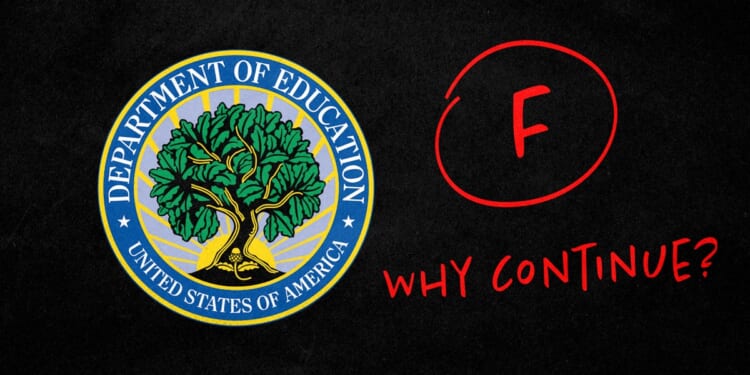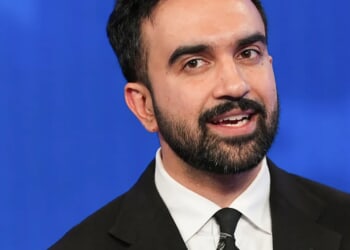President Donald Trump has long argued that the Department of Education is a bloated bureaucracy that drains taxpayer dollars while producing little measurable improvement in America’s schools. Last week, his administration followed through when nearly 460 employees — roughly 20% of the Department’s staff — were laid off.
The most significant reductions came from the Office of Special Education and Rehabilitative Services and the TRIO College Access Program. Teachers’ unions quickly claimed these cuts would harm students, but the evidence points to the opposite. For nearly half a century, the Department has consumed billions of dollars without raising student achievement.
The Department of Education was created in 1979 under President Jimmy Carter, largely as a political concession to unions. It is one of the newest Cabinet agencies, yet today it employs more than 4,100 people and oversees a budget exceeding $268 billion. Despite this massive investment, outcomes have been stagnant.
The National Assessment of Educational Progress (NAEP), often called the “nation’s report card,” shows that reading and math scores for 17-year-olds are virtually unchanged since the early 1980s. Graduation rates have risen only marginally, and international comparisons show the United States continues to trail other developed countries in math and science despite federal spending in the trillions.
Defenders of the DOE argue that Washington oversight is necessary to protect disadvantaged students, but the record proves otherwise. Federal funding makes up just 8% of total K-12 revenues, yet schools must comply with thousands of pages of regulations to access those dollars. A 2016 Government Accountability Office report found that many federal programs duplicate efforts already carried out by states, forcing districts to spend money on compliance rather than instruction. Instead of improving classrooms, the Department has added layers of bureaucracy and diverted resources away from students.
President Trump’s executive order to begin phasing out the Department reflects a broader conservative principle: education belongs at the state and local level. The Tenth Amendment makes clear that powers not delegated to the federal government are reserved to the states. For nearly two centuries before the Department’s creation, schools were run locally, and the states that have reformed education most successfully — such as Massachusetts with rigorous standards and Florida with school choice — did so without direction from Washington. Federal involvement has only restricted innovation.
Education Secretary Linda McMahon has emphasized that vulnerable populations will not be neglected. Oversight of disability services, she suggested, could be moved to the Department of Health and Human Services, which already manages medical and rehabilitative programs. Consolidating services under one roof ensures greater accountability and eliminates duplication. Students with disabilities deserve better than a fragmented system where multiple federal agencies compete for control.
The real beneficiaries of abolishing the Department are families. For decades, Washington has imposed top-down mandates, forcing states to compete for funding only if they adopt unnecessary programs such as DEI initiatives. These requirements cost states billions, narrow curricula, and tie teachers’ hands.
Local leaders, not federal administrators, are best equipped to design reforms that reflect community needs. By returning authority to states, reforms such as charter schools, education savings accounts, and targeted accountability measures can be expanded without federal interference.
Democrats say eliminating the Department would “fragment” education, but that fragmentation already exists. Over 90% of school funding is controlled by states and districts, and outcomes vary depending on state policy choices. Federal intervention has failed to close achievement gaps. In fact, many of the most successful reforms in recent decades — Arizona’s universal education savings accounts, Florida’s charter growth, Washington, DC’s voucher program — were state- or city-driven, not federally imposed.
The Department of Education represents the worst of Washington: a costly bureaucracy with little accountability and no measurable success. President Trump’s workforce reduction is an important step toward full abolition. Shutting down the Department would save taxpayers tens of billions annually and restore authority to states and parents.
By downsizing and ultimately closing the Department, America can redirect resources where they matter most: classrooms, students, and the nation’s future.

















